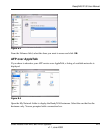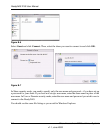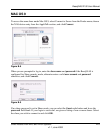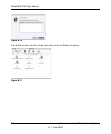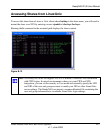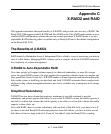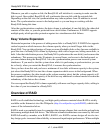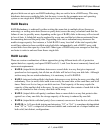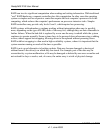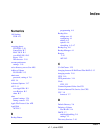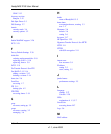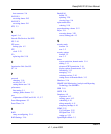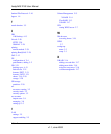
ReadyNAS 2100 User Manual
X-RAID2 and RAID C-3
v1.1, June 2009
physical disks are set up to use RAID technology, they are said to be in a RAID array. This array
distributes data across multiple disks, but the array is seen by the computer user and operating
system as one single disk. RAID can be set up to serve several different purposes.
RAID Basics
RAID Redundancy is achieved by either writing the same data to multiple drives (known as
mirroring), or writing extra data (known as parity data) across the array, calculated such that the
failure of one (or possibly more, depending on the type of RAID) disks in the array will not result
in loss of data. A failed disk may be replaced by a new one, and the lost data reconstructed from
the remaining data and the parity data. Organizing disks into a redundant array decreases the
usable storage capacity. For instance, a 2-disk RAID 1 array loses half of the total capacity that
would have otherwise been available using both disks independently, and a RAID 5 array with
several disks loses the capacity of one disk. Other types of RAID arrays are arranged so that they
are faster to write to and read from than a single disk.
RAID Levels
There are various combinations of these approaches giving different trade-offs of protection
against data loss, capacity, and speed. RAID levels 0, 1, and 5 are the most commonly found, and
cover most requirements.
• RAID 0 (striped disks) distributes data across several disks in a way that gives improved
speed and no lost capacity, but all data on all disks will be lost if any one disk fails. Although
such an array has no actual redundancy, it is customary to call it RAID 0.
• RAID 1 (mirrored settings/disks) duplicates data across every disk in the array, providing full
redundancy. Two (or more) disks each store exactly the same data, at the same time, and at all
times. Data is not lost as long as one disk survives. Total capacity of the array equals the
capacity of the smallest disk in the array. At any given instant, the contents of each disk in the
array are identical to that of every other disk in the array.
• RAID 5 (striped disks with parity) combines three or more disks in a way that protects data
against loss of any one disk; the storage capacity of the array is reduced by one disk.
• RAID 6 (striped disks with dual parity) (less common) can recover from the loss of two disks.
• RAID 10 (or 1+0) uses both striping and mirroring. “01” or “0+1” is sometimes distinguished
from “10” or “1+0”: a striped set of mirrored subsets and a mirrored set of striped subsets are
both valid, but distinct, configurations.



